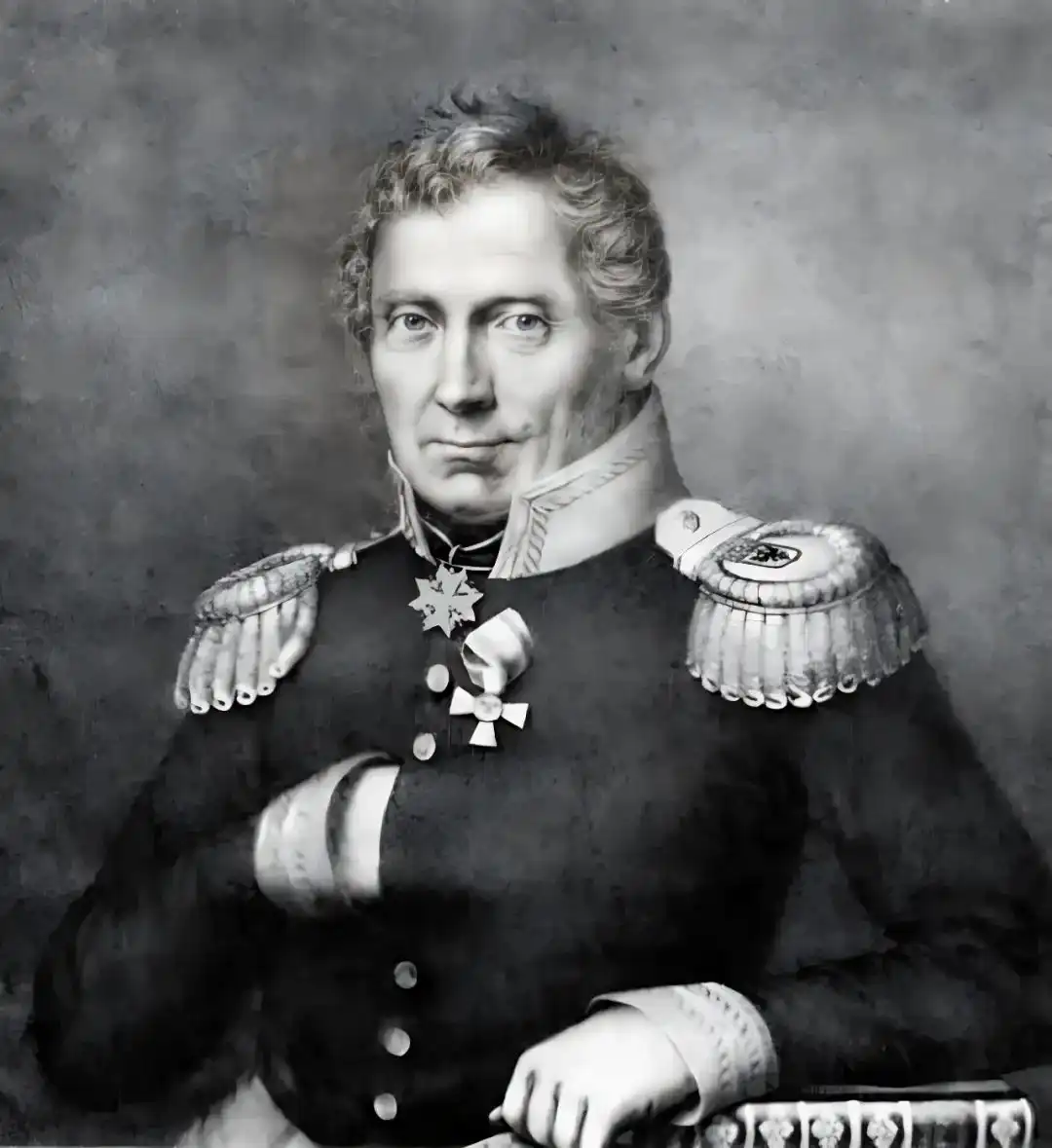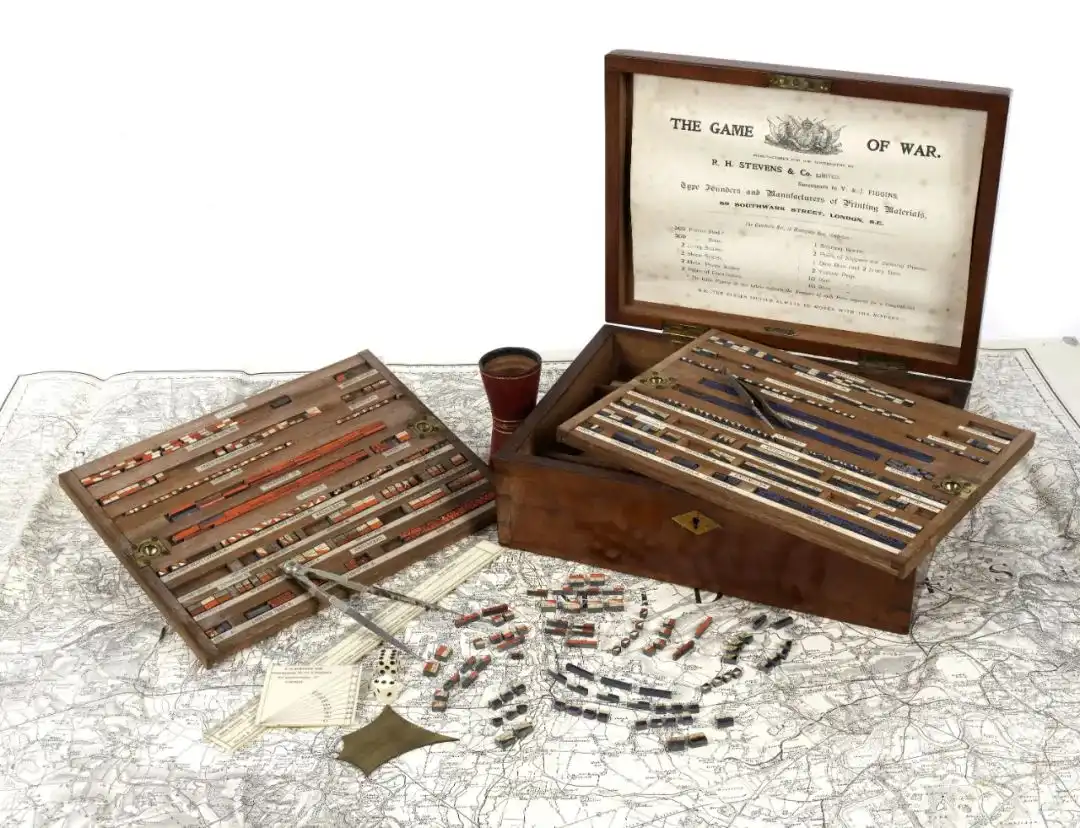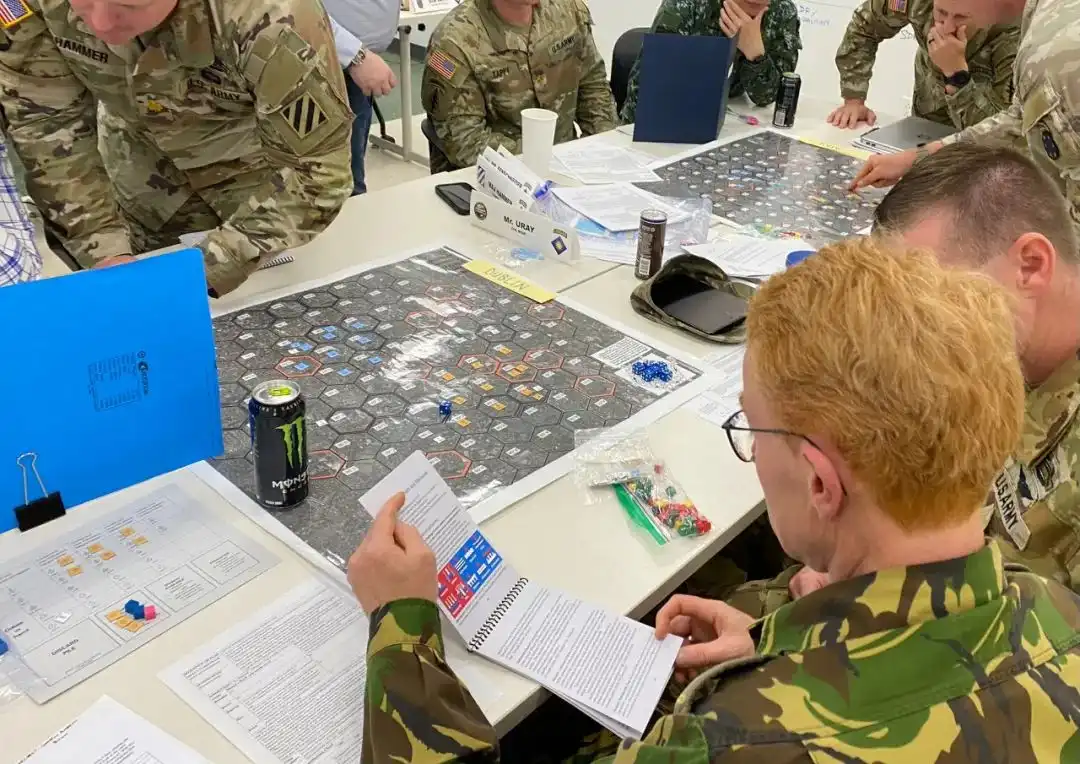The Origin, Development and Debates of the Concept of Warchess
Judging from the development history of warchess, many people do not understand its concept and connotation, which leads to cognitive deviations and misunderstandings about it itself, which affects and restricts its development. In particular, the word "game" contains multiple meanings in the Western language system, such as games, competitions, games, sports, tricks, adventurous spirit, etc., but we often only translate it as "game". For example, board game is translated into a "table game", and in the form of maps, chess pieces and dice, played by a group of people on the table, it gives people the impression of being gamified and very unserious, and it is difficult to associate it with complex war issues, and this misunderstanding affects the development of war games. Therefore, it is necessary to rectify the source, clarify the context and connotation, and clarify the essential laws and core mechanisms of war chess.
The origin and development of the word "war chess"
The word "war chess" comes from the German "kriegsspiel", which is literally translated as "war game". Modern war chess was invented in 1811 by Leopold Georges von Leswitz of Prussia. In the warchess exercise, the two participating parties used small wooden blocks representing the troops of the two warring parties to simulate various combat actions on the sand table on the simulated field. The warring parties will convey their respective combat plans and orders to an arbitrator, who will be responsible for mobilizing troops and reporting back to the participating parties on changes in the situation on the sand table. The arbitrator determines the consumption of troops on both sides based on terrain, weapon range and other factors, and uses dice rolls to assist in the adjudication to determine the results and casualties of both sides.

Lieutenant George Von Leswitz (also known as Leswitz Jr.)
Von Leswicz's son Lieutenant Leswicz Jr. later improved his father's war chess, replacing sand tables with maps, replacing small stones with pictographic team symbols, and making further detailed provisions on mobility, close combat and rules used by different arms.
In 1837, Helmuth von Mauchi, chief of the Prussian General staff, forcibly promoted Krigsbelle in the Prussian army by institutional means, which greatly improved the professional quality of Prussian officers. With the victory of Prussia in the Prussian-Austrian War and the Franco-Prussian War, Krigsbell, the military academy system and the staff system were emulated by countries all over the world at the same time. In 1883, Japan established the Army University in Tokyo and hired Army Major General Michael and others from the German General staff to teach military science, military system, staff exercises and other courses in Japan. It was at this time that Krigersbell was introduced into Japan. At first, the Japanese translated it directly as "war game" (that is, "war game"), but with the deepening of understanding, it was later translated as "chess exercise". This name is an accurate translation made by the Japanese based on the origin of Bing Chess from "Battle Chess". China came into contact with military chess later than Japan. During the late Qing Dynasty and the Republic of China, many Chinese studied in Japan and began to come into contact with military chess, so they continued to use Japanese translation. During the period of the Republic of China, the Army University invited Japan to teach, so the Kuomintang army also continued the concept of military chess.

Warchess designed by Little Leswitz (1824)
The first person to introduce Kriegsbell to the United States was U.S. Engineer Major Livor Moore. At that time, he used a literal translation to translate it into "war game", which immediately caused controversy in the United States. For example, Matthew Caffrey, a war chess expert at the U.S. Air Force War Game Institute, believes that war game is just a direct translation of the German "kriegsspiel". Unfortunately, many soldiers feel uncomfortable with "war games" from the bottom of their bones, perhaps because they feel that war is too serious to use the word "game". This directly poses challenges to the historical research of war games, so war games are often called by other names, such as "map maneuver","chart maneuver","field maneuver", and some people even call it modeling and simulation.
Differences and connections between concepts related to "war chess"
In fact, the term war game represents a very broad meaning within the US military. For example, the US military's Joint Publication 1-02, Department of Defense Dictionary of Military and Related Terms defines war game as:"A simulation of military operations between two or more opposing forces by any means, using rules, data, and procedures to describe a real or envisaged situation." Thus it can be seen that the US military will use any means, rules, data, and procedures to describe military operations against forces, which is called war game, which makes combat simulations, military exercises, and even military training covered. The vagueness and controversy of this concept also directly affect our translation of English, which leads to misunderstandings in the understanding of the concept of chess. For example, war game is translated as war game and war simulation in the book "interpretation of military language commonly used by the US military", war game is translated into military exercise and war (combat) simulation in the "Dictionary of US military and related terms", and war gaming is translated into combat simulation in the book "US military training Simulation". In the book "the process of making tactical decisions", wargaming is translated into military chess, while "Virtual military exercise" translates wargame into military chess. The army in Taiwan translated war game into war simulation and chess. In our army's old version of "military language", another term is "combat game", which is defined as:"In order to test combat concepts, confrontational simulation activities are carried out with the help of certain combat models, including confrontational simulations of wars and confrontational simulations of battles and battles." It should be said that our military's "combat game" is closer to what Western countries call war game.
War games, model, and simulation have both been translated into combat simulations. So is there any difference between them? Samasius Caffrey believes that:Some people have used modeling, simulation, and wargaming as the same word, when in fact they are very different organizational parts of wargaming. A model is just a description of actual things to scale. Painting is not a model, but a design drawing is. Models vary according to the objects extracted, such as the physical model of the aircraft, the design drawing of the aircraft, and the mathematical equations used to express the performance of the aircraft, all belong to models. Simulation is a proportional description of actual things in time. For example, a reduced wing is a model for a wing of actual size. When you put the wing into a wind tunnel and measure its effect at different wind speeds, what you do is simulation. The decisive factor in whether an exercise can be counted as a wargame lies in whether there are imaginary enemies in the exercise who can think independently. Judging from this standard, the US military's "Red Flag" exercise can be called wargame due to the presence of invading troops, but unilateral strategic maneuver exercises are not.
American civilian military expert Deng Ningen believes:The terms wargame, model and simulation are often incorrectly used interchangeably. In fact, these three terms are different for professional military wargame researchers. Wargame emphasizes confrontation, while models pay more attention to detail and accuracy. The three are interrelated. Simulation is first of all a collection of models, and wargame itself is simulation or model, which is a simulation with antagonistic nature.
The Wargame Department website of the U.S. Naval War College believes that wargame involves people making decisions in the context of competition or conflict (with themselves, other people, or the environment). A model is often thought of as a representative of something, usually on a smaller scale. It can be presented in many ways:Physically, for example, using clay or plastic; virtually, for example, computer models of jet fighters. Simulations occur when the model begins to interact with other models, or when we want to represent the model's behavior in a complex synthetic environment.

The US military often uses war chess deduction methods in military education
In addition, the US military also has a dispute over war game (split) and wargame (linked). Colonel Scott E. Goering of the Naval Military Academy believes that, like many other concepts, the spelling and definition of wargaming is subject to inter-service controversy in the joint arena. In 1993, the U.S. Air Force Wargame Institute wrote it as wargame. The commercial field still uses the ligature form, but the Department of Defense and many other earlier researchers use the split-write form.
It can be seen that the United States has differences on the use of this term. The Department of Defense and the military advocate still using war game, while the Air Force Wargame Research Institute, the Naval Analysis Center (CNA) of the Naval Military Academy, and civilian wargame experts advocate using wargame. In fact, precisely because the meaning of war game is very broad, some experts in the United States believe that a special distinction should be made in order to distinguish between the narrow sense of "kriegsspiel". For example, Dr. Peter Pera, a war chess expert at the U.S. Naval Military Academy, believes that war and game should be connected into a "wargame". As a technical term, it refers to the participation of the mover from both sides of the confrontation and the determination of both sides to influence a series of combat events. Modeling or simulation, but does not include combat between real forces.
Analysis of the causes of conceptual errors in warchess
Why do the division and concatenation of war games cause conceptual errors? The reason is mainly because the two represent different research methods. Matthew Caffrey of the U.S. Air Force Warchess Institute believes that in the 1950s and 1990s, U.S. military and civilian warchess experts used different methods when conducting combat simulations. The military uses a "bottom-up" research method and more uses military operational modeling methods for simulations. In their documentation materials, the war game form is often used. Folk wargame experts, represented by Dunningen and Mark Herman, adopt a "top-down" wargame research method based on history, and they prefer to use wargame.
There are great differences between these two research methods. Military operational modeling usually refers to decomposing the problem under study in the process of studying the problem, starting with the most basic unit, and then comprehensively researching the problem through the combination of each unit model. When conducting combat simulations, military operations personnel first conduct detailed models of each combat unit, such as tanks, aircraft and ships, and then integrate them to form a combat system. The basic method for its application is to draw conclusions through combat calculations. The history-based warchess analysis method emphasizes being based on historical combat data or range experimental data, and making full use of event probabilities drawn from combat history and historically correct conclusions to revise rules. When studying a problem, an overall overview is usually made, and then the overall situation is reflected in the form of probability.
The math-based military operations method pays more attention to strict index calculations and draws conclusions through the use of index comparisons. This method can scientifically draw the strength comparison between the two sides, but it is very easy to cause the simulation results to be disconnected from objective reality due to "cumulative deviations." In addition, it is difficult to simulate psychology, morale, training level and unconventional combat operations, and the calculation method is complex, which is difficult to reflect the commander's flexible thinking level and tactics, and the simulation of the overall combat system is prone to large deviations. Some problems reflected in some military simulation systems of the US military during the Vietnam War in supporting combat analysis, military training, and military education were caused by the simple use of military operational modeling methods.
The history-based warchess analysis method focuses on the use of historical experience, does not strictly insist on the combat index analysis of basic units, and focuses on using flexible rules to make corrections in a comprehensive system. Although this method will show obvious shortcomings in terms of simulation details, it can better match the actual situation of the operation on a macro level. It is relatively simple and flexible, and can draw more practical conclusions for specific problems. It is this method that Duningen, Mark Herman and others used to make some of the civilian and professional war games they designed more practical and have become the defense partners that the US military currently relies on.
After the 1990s, the US military began to focus on using history-based warchess analysis methods in the development of combat simulation systems. Today, these two methods learn from each other and cooperate with each other. Matthew Caffrey believes that the US military's current combat simulation research methods have converged. That is to say, a history-based war chess analysis method is used at the top level to draw relatively macro conclusions, and military operational modeling is used on details to simulate some specific issues, such as ammunition damage effects. At the same time, it is supplemented by actual combat and actual combat verification methods to make the simulation system more scientific and reliable. The latest simulation system JWARS (Joint Warfare System) currently under development by the US military integrates the basic principles of war chess and the technical foundation of modeling.
At present, the difference between the US military's use of war game and wargame is not very obvious. The latest US Joint Publication 5-0 (JP5-0) published by the US military:The word "wargame" also began to be used in the Joint Warfare Plan, which specifically introduces wargame in Chapter 3, Section C. Many U.S. generals since the Gulf War, such as Norman Schwarzkopf, Tommy Franks, Mike Delon, etc., did not strictly distinguish between the use of war game and wargame in their respective memoirs.
Like the changes that converge with the concept of the US military, we can further distinguish between the concepts of military chess, simulation and simulation. From the perspective of cocoon extraction, Bing Chess highlights antagonism, highlights people in the ring, highlights regular models, and highlights systematicness; simulation emphasizes more detail, people can not participate, it is a simulation of the real object and environment, and there can be no independent opponents; and the concept of simulation is broader, so simulation, chess and other systems can all be called simulation. Chess and simulation are not a contradiction, but a complementary concept. The chess system can be used in complex systems, antagonistic argumentation, to find problems and to find the overall deficiencies. The simulation system emphasizes details and highlights the realistic construction and simulation of local links, which can make up for the lack of details of military chess, and close cooperation with military chess can solve the problem. Military chess not only emphasizes the rules dominated by experience and practice, but also attaches importance to simplified mathematical calculation, which is different from simulation which emphasizes calculation while neglecting military experience. The development of the future combat simulation system must be to use the "regular system + local micro-simulation of simulation" to solve future problems.
Judging from the conceptual translation of war chess and war chess deduction, the translation of war chess draws on the concept of Eastern "chess" and is a free translation of kriegsspiel and wargame, retaining its core and essence and better reflecting its original intention.
copyright notice:This article was published in the 2nd issue of Military Digest magazine in 2024. The author:He Changqi, If you need to reprint it, please be sure to indicate "Transferred from Military Digest".
attention to our
